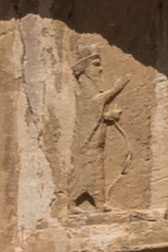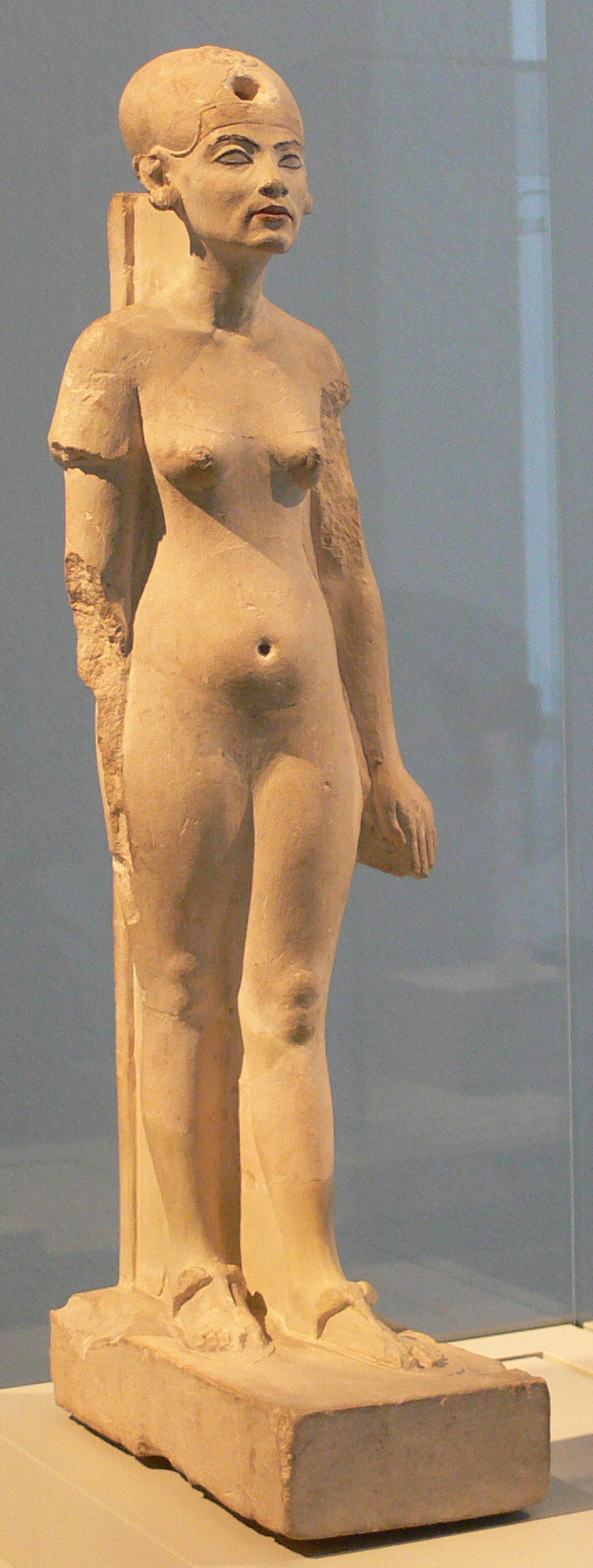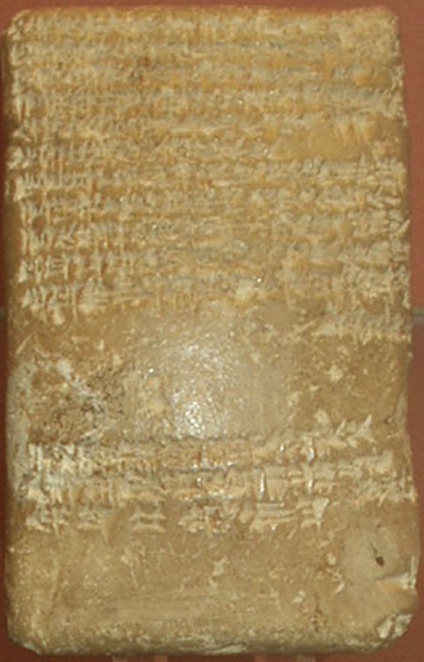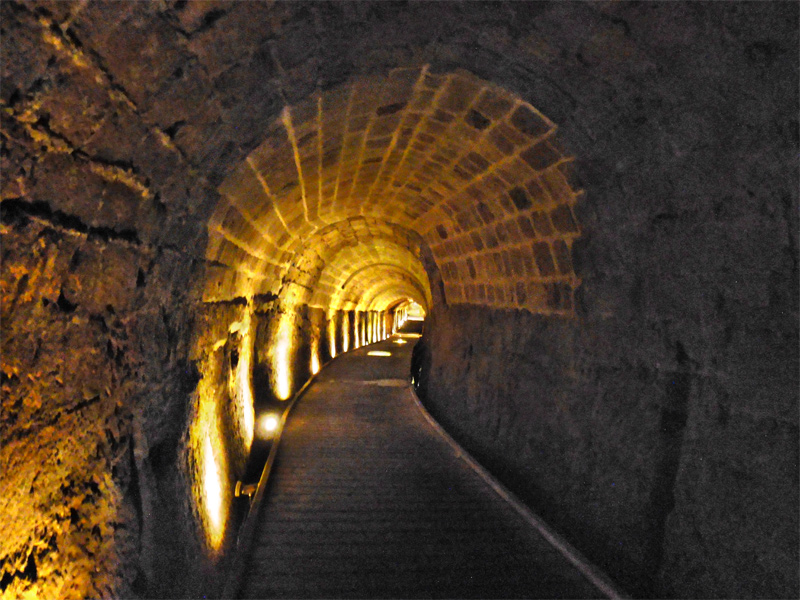|
Burnaburiash II
Burna-Buriaš II () was a Kassite king of Karduniaš (Babylon) in the Late Bronze Age, ca. 1359–1333 BC, where the Short and Middle chronologies have converged. The proverb "the time of checking the books is the shepherds' ordeal" was attributed to him in a letter to the later king Esarhaddon from his agent Mar-Issar. Reign Burna-Buriaš II (rendered in cuneiform as ''Bur-na-'' or ''Bur-ra-Bu-ri-ia-aš'', and meaning ''servant/protégé of the Lord of the lands'' in the Kassite language) is recorded as the 19th King to ascend the Kassite throne, he succeeded Kadašman-Enlil I, who was likely his father, and ruled for 27 years. International relations Egyptians Depending on synchronization with the "high" or "low" chronologies of Egypt, he was a contemporary of the Egyptian Pharaohs Amenhotep III, Akhenaten and Tutankhamen (low). The diplomatic correspondence between Burna-Buriaš and the pharaohs is preserved in nine of the Amarna letters, designated EA (for ''El Amarna ... [...More Info...] [...Related Items...] OR: [Wikipedia] [Google] [Baidu] |
List Of Kings Of Babylon
The king of Babylon (Akkadian language, Akkadian: , later also ) was the ruler of the ancient Mesopotamian city of Babylon and its kingdom, Babylonia, which existed as an independent realm from the 19th century BC to its fall in the 6th century BC. For the majority of its existence as an independent kingdom, Babylon ruled most of southern Mesopotamia, composed of the ancient regions of Sumer and Akkad (region), Akkad. The city experienced two major periods of ascendancy, when Babylonian kings rose to dominate large parts of the Ancient Near East: the First Babylonian Empire (or Old Babylonian Empire, 1894/1880–1595 BC) and the Second Babylonian Empire (or Neo-Babylonian Empire, 626–539 BC). Babylon was ruled by Hammurabi, who created the Code of Hammurabi. Many of Babylon's kings were of foreign origin. Throughout the city's nearly two-thousand year history, it was ruled by kings of native Babylonian (Akkadian), Amorites, Amorite, Kassites, Kassite, Elamite, Arameans, Aramean, ... [...More Info...] [...Related Items...] OR: [Wikipedia] [Google] [Baidu] |
Akhenaten
Akhenaten (pronounced ), also spelled Akhenaton or Echnaton ( ''ʾŪḫə-nə-yātəy'', , meaning 'Effective for the Aten'), was an ancient Egyptian pharaoh reigning or 1351–1334 BC, the tenth ruler of the Eighteenth Dynasty of Egypt, Eighteenth Dynasty. Before the fifth year of his reign, he was known as Amenhotep IV (, meaning "Amun is satisfied", Hellenized as ''Amenophis IV''). As a pharaoh, Akhenaten is noted for abandoning traditional ancient Egyptian religion of polytheism and introducing Atenism, or worship centered around Aten. The views of Egyptologists differ as to whether the religious policy was absolutely monotheism, monotheistic, or whether it was monolatristic, religious syncretism, syncretistic, or henotheistic. This culture shift away from traditional religion was reversed after his death. Akhenaten's monuments were dismantled and hidden, his statues were destroyed, and his name Damnatio memoriae, excluded from regnal list, lists of rulers compiled by lat ... [...More Info...] [...Related Items...] OR: [Wikipedia] [Google] [Baidu] |
Nefertiti
Nefertiti () () was a queen of the Eighteenth Dynasty of Egypt, 18th Dynasty of Ancient Egypt, the Great Royal Wife, great royal wife of Pharaoh Akhenaten. Nefertiti and her husband were known for their radical overhaul of state religious policy, in which they promoted the earliest known form of monotheism, Atenism, centered on Aten, the sun disc and its direct connection to the royal household. With her husband, she reigned at what was arguably the wealthiest period of ancient Egyptian history. After her husband's death, some scholars believe that Nefertiti ruled briefly as the female pharaoh known by the throne name, Neferneferuaten and before the ascension of Tutankhamun, although this identification is Neferneferuaten#Nefertiti, a matter of ongoing debate. If Nefertiti did rule as pharaoh, her reign was marked by the fall of Amarna and relocation of the capital back to the traditional city of Thebes, Egypt, Thebes. In the 20th century, Nefertiti was made famous by the disco ... [...More Info...] [...Related Items...] OR: [Wikipedia] [Google] [Baidu] |
Amarna Letter EA 287
Amarna letter EA 287, titled: ''"A Very Serious Crime,"'' is a tall, finely-inscribed clay tablet letter, approximately 8 in tall, from Abdi-Heba the mayor/ruler of Jerusalem, of the mid 14th century BC Amarna letters. The scribe of his six letters to Egypt were penned by the " Jerusalem scribe"; EA 287 is a moderately long, and involved letter. The Amarna letters, about 300, numbered up to EA 382, are a mid 14th century BC, about 1350 BC and 20–25 years later, correspondence. The initial corpus of letters were found at Akhenaten's city Akhetaten, in the floor of the Bureau of Correspondence of Pharaoh; others were later found, adding to the body of letters. Letter EA 287 (see here-(Reverse), is numbered VAT 1644, from the Vorderasiatisches Museum Berlin. Glossenkeils Glossenkeils used in letter 387: The letter EA 287: ''"A Very Serious Crime"'' EA 287, letter three of six. (Not a linear, line-by-line translation, and English from French.) Moran, William L. 1987, 1992. ... [...More Info...] [...Related Items...] OR: [Wikipedia] [Google] [Baidu] |
Jerusalem
Jerusalem is a city in the Southern Levant, on a plateau in the Judaean Mountains between the Mediterranean Sea, Mediterranean and the Dead Sea. It is one of the List of oldest continuously inhabited cities, oldest cities in the world, and is considered Holy city, holy to the three major Abrahamic religions—Judaism, Christianity, and Islam. Both Israel and Palestine claim Jerusalem as their capital city; Israel maintains its primary governmental institutions there, while Palestine ultimately foresees it as its seat of power. Neither claim is widely Status of Jerusalem, recognized internationally. Throughout History of Jerusalem, its long history, Jerusalem has been destroyed at least twice, Siege of Jerusalem (other), besieged 23 times, captured and recaptured 44 times, and attacked 52 times. According to Eric H. Cline's tally in Jerusalem Besieged. The part of Jerusalem called the City of David (historic), City of David shows first signs of settlement in the 4th ... [...More Info...] [...Related Items...] OR: [Wikipedia] [Google] [Baidu] |
Abdi-Heba
Abdi-Ḫeba (Abdi-Kheba, Abdi-Ḫepat, or Abdi-Ḫebat) was a local chieftain of History of Jerusalem, Jerusalem during the Amarna period (mid-1330s BC). Ancient Egypt, Egyptian documents have him deny he was a mayor (''ḫazānu'') and assert he is a soldier (''we'w''), the implication being he was the son of a local chief sent to Egypt to receive military training there. Also unknown is whether he was part of a dynasty that governed Jerusalem or whether he was put on the throne by the Egyptians. Abdi-Ḫeba himself notes that he holds his position not through his parental lineage but by the grace of Pharaoh, but this might be flattery rather than an accurate representation of the situation. At this time the area he administered from his garrison may have had a population of fifteen hundred people and Jerusalem would have been a 'small highlands stronghold' in the fourteenth century BC with no fortifications or large buildings. Origin Abdi-Ḫeba's name can be translated as "ser ... [...More Info...] [...Related Items...] OR: [Wikipedia] [Google] [Baidu] |
Amarna Letter EA 9
Amarna letter EA 9 is a tall, compact 38 line (capable of 55 lines) clay tablet letter of 3 paragraphs, in pristine condition, with few flaws on the clay. The photo of the reverse (pictured) shows half of Paragraph III, and some of the signs (out of focus). The letter is from King Burra-Buriyaš of Babylon (furthest country writing to Egypt) and is to the Pharaoh of Egypt (Egypt named ''Misri'' at Amarna letters time). Of note, the Pharaoh is named Neb-Kheper- Ra, (meaning King-Manifested-Ra), (King-transformed-(as)-Ra), and is spelled in cuneiform signs, ''Né-( ni)-eB iK- Pa- Ri, Ri-(iya)'', for "Neb-Kheper- Ra-(mine)", "(My) King, manifested Ra". The introductory, and salutory Paragraph I, highlights, ''peace'' (šalāmu-'' shu- ul- mu'') for King Burnaburiash, and wishes ''peace, and well-being'' to the Pharaoh, and on the many contingents of the Pharaoh's charge, wife, army, the country, etc. Paragraph II highlights the need for gold, for building a mausoleum for Burnabur ... [...More Info...] [...Related Items...] OR: [Wikipedia] [Google] [Baidu] |
Kurigalzu I
Kurigalzu I (died c. 1375 BC), usually inscribed ''ku- ri- gal-zu'' but also sometimes with the m or d determinative, the 17th king of the Kassite or 3rd dynasty that ruled over Babylon, was responsible for one of the most extensive and widespread building programs for which evidence has survived in Babylonia. The ''autobiography of Kurigalzu'' is one of the inscriptions which record that he was the son of Kadašman-Ḫarbe. ''Galzu'', whose possible native pronunciation was ''gal-du'' or ''gal-šu'', was the name by which the Kassites called themselves and Kurigalzu may mean ''Shepherd of the Kassites'' (line 23. ''Ku-ur-gal-zu'' = ''Ri-'-i-bi-ši-i'', in a Babylonian name-list). He was separated from his namesake, Kurigalzu II, by around forty-five years and as it was not the custom to assign regnal numbers and they both had lengthy reigns, this makes it exceptionally difficult to distinguish for whom an inscription is intended. The later king is, however, better known for hi ... [...More Info...] [...Related Items...] OR: [Wikipedia] [Google] [Baidu] |
Acre, Israel
Acre ( ), known in Hebrew as Akko (, ) and in Arabic as Akka (, ), is a List of cities in Israel, city in the coastal plain region of the Northern District (Israel), Northern District of Israel. The city occupies a strategic location, sitting in a natural harbour at the extremity of Haifa Bay on the coast of the Mediterranean's Levantine Sea. In the Village Statistics, 1945, 1945 census Acre's population numbered 12,360; 9,890 Muslims, 2,330 Christians, 50 Jews and 90 classified as "other".Department of Statistics, 1945, p4Government of Palestine, Department of Statistics. ''Village Statistics, April, 1945.'' Quoted in Hadawi, 1970, p40 Acre Prison, Acre's fort was converted into a jail, where members of the Jewish underground were held during their struggle against the Mandate authorities, among them Ze'ev Jabotinsky, Shlomo Ben-Yosef, and Dov Gruner. Gruner and Ben-Yosef were executed there. Other Jewish inmates were freed by members of the Irgun, who Acre Prison break, brok ... [...More Info...] [...Related Items...] OR: [Wikipedia] [Google] [Baidu] |
Satatna
Satatna was the ruler of the city-state of Akko (modern Acre, Israel) around 1350 BC. At the time the city was a vassal of Egypt. Reign Satatna (or Sitatna,Šutatna/''Shutatna') was the ruler of Akko. Amarna Letters In the Amarna Archive, Satatna was the author of three letters (EA 233-235) to the Pharaoh. He is also mentioned letters by Bayadi a mayor in Syria (EA 238) and Burna-Buriash of Karduniash (Babylon) (EA 8). Amarna Letter EA 08. In a letter by Burna-Buriash addressed to "Naphu'rure" of Egypt (Akhenaten or Tutankhamen), he is complaining about his merchants being detained in Canaan. He states "''After Ahu-tabu went to my brother, in Hinnatuna of Canaan, Sum-Adda, the son of Balumme, and Sutatna, the son of Saratum of Akka, sent their men, killed my merchants and took away their money''".Moran 192:16 A list of Satatna authored letters is as follows: :#EA 233—title: ''"Work in progress"'' :#EA 234—title: ''"Like Magdalu in Egypt"''. See: commissioner: Šut ... [...More Info...] [...Related Items...] OR: [Wikipedia] [Google] [Baidu] |
Canaan
CanaanThe current scholarly edition of the Septuagint, Greek Old Testament spells the word without any accents, cf. Septuaginta : id est Vetus Testamentum graece iuxta LXX interprets. 2. ed. / recogn. et emendavit Robert Hanhart. Stuttgart : Dt. Bibelges., 2006 . However, in modern Greek, the accentuation is , while the Novum Testamentum Graece, current (28th) scholarly edition of the New Testament has . was an Ancient Semitic-speaking peoples, ancient Semitic-speaking civilization and region of the Southern Levant during the late 2nd millennium BC. Canaan had significant geopolitical importance in the Late Bronze Age Amarna Period (14th century BC) as the area where the sphere of influence, spheres of interest of the Egyptian Empire, Egyptian, Hittites, Hittite, Mitanni, and Assyrian Empires converged or overlapped. Much of present-day knowledge about Canaan stems from Excavation (archaeology), archaeological excavation in this area at sites such as Tel Hazor, Tel Megiddo, ... [...More Info...] [...Related Items...] OR: [Wikipedia] [Google] [Baidu] |
BM 29785 EA 9 Reverse V2
BM or bm may refer to: Arts and entertainment Music * BM (rapper), born Matthew Kim, a Korean-American rapper * BM (singer), a Congolese-born, British singer-songwriter, dancer, director and record producer * ''BM'' (album), a 2008 Barbara Morgenstern album * B minor, a musical chord (Bm) * Bachelor of Music, an academic degree * Beautiful music, a radio format * Black metal, a genre of music Other uses in arts and entertainment * Bashir Mirza, a Pakistani painter * BM or "Bad Manners" in video gaming, cf. glossary of video game terms#BM Business Business terminology * Brick and mortar or B&M Businesses * Birmingham Midshires, a division of the Bank of Scotland * Bolinder-Munktell, a Swedish tractor manufacturer, now part of Volvo * Bolliger & Mabillard, B&M, a Swiss roller coaster manufacturer * Boston and Maine Corporation, B&M, a former US railway company * British Midland International, former airline rebranded bmi ** BMI Regional, IATA airline code Scie ... [...More Info...] [...Related Items...] OR: [Wikipedia] [Google] [Baidu] |







